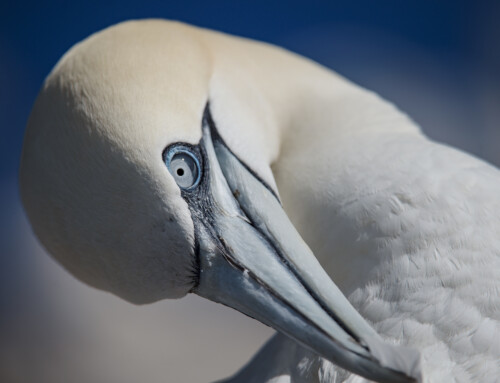LINKED PAPER
Breeding ground correlates of the distribution and decline of the Common Cuckoo Cuculus canorus at two spatial scales. Denerley, C., Redpath, S. M., Van der Wal, R., Newson, S. E., Chapman, J. W. & Wilson, J. D. 2019. IBIS. DOI: 10.1111/ibi.12612 VIEW
The characteristic sound of spring – ‘Cuckoo!’ – is becoming less common in Europe. Between 1980 and 2015 the number of Common Cuckoos (Cuculus canorus) has declined by 27 percent (Harris et al. 2017). In some regions, this decrease is even more dramatic: the UK, for instance, experienced a 43% decline in Cuckoo numbers from 1995 to 2015. This downward trend prompted ornithologists to look for an explanation from a long list of potential causes, among others climate change, food availability, habitat loss, deteriorating conditions on the wintering grounds (Vickery et al. 2014). A recent study focused on the situation in the UK: Chloe Denerley and her colleagues explored the population dynamics of Common Cuckoos on a local scale (within the county of Devon) and on a national scale (the UK).
Local scale
In the county of Devon (southeast England), Cuckoos declined by 18% between 1977 and 2013. In 2012, the researchers monitored the local population of Cuckoos using playback recordings (males quickly approach these sounds). Next, they correlated the occupancy of these birds with environmental variables, the presence of other bird species and the abundance of different moths (on whose larvae the Cuckoos feed). The results revealed that Cuckoos are more common in semi-natural habitats with higher numbers of Meadow Pipits (Anthus pratensis), one of their host species (Brooke & Davies 1987). In addition, more moths were captured in areas where Cuckoos were found.
Figure 1 The dramatic decline in Cuckoo numbers in Devon. Each red dot corresponds to a sighting of a Common Cuckoo. The size of the dot reflects the certainty of the sighting.
National scale
Expanding the study area to the entire UK, the researchers found that Cuckoos has become more common in heathlands and wetlands. The former habitat houses Meadow Pipits (supporting the findings on the local scale), while the latter habitat contains another host species, the Reed Warbler (Acrocephalus scirpaceus, Thorogood & Davies 2013). Similar to the local scale results, the changing distribution in Common Cuckoos is associated with the occurrence of moths. These insects have been declining rapidly and might thus partly explain the decrease in Cuckoo numbers (Fox 2013).
Figure 2 The probability of detecting a Common Cuckoo increases with more semi-natural habitat and more Meadow Pipits.
Conservation
In summary, the declining Cuckoo population is associated with a heathland habitat where the Meadow Pipit is the main host species. In the lowlands, the Cuckoos are shifting from agricultural habitats to wetland areas that house the Reed Warbler as a host species. Moreover, the resulting Cuckoo distribution follows the changing abundance of prey, namely moths. These findings can be used to devise an effective management plan to halt the decline of the Cuckoo.
References
Brooke, M. D. L., & Davies, N. B. (1987). Recent changes in host usage by cuckoos Cuculus canorus in Britain. Journal of Animal Ecology 56: 873-883. VIEW
Fox, R. (2013). The decline of moths in Great Britain: a review of possible causes. Insect Conservation and Diversity 6: 5-19. VIEW
Harris, S. J., Massimino, D., Gillings, S., Eaton, M. A., Noble, D. G., Balmer, D. E., Procter, D. & Pearce-Higgins, J. W. (2017). The Breeding Bird Survey 2016. BTO Research Report 700. Thetford: British Trust for Ornithology. VIEW
Thorogood, R., & Davies, N. B. (2013). Reed warbler hosts fine‐tune their defenses to track three decades of cuckoo decline. Evolution 67: 3545-3555. VIEW
Vickery, J. A., Ewing, S. R., Smith, K. W., Pain, D. J., Bairlein, F., Škorpilová, J., & Gregory, R. D. (2014). The decline of Afro‐Palaearctic migrants and an assessment of potential causes. Ibis 156: 1-22. VIEW
Image credits
Featured image: Common Cuckoo Cuculus canorus | Chris Romeiks | CC BY-SA 3.0 Wikimedia Commons






